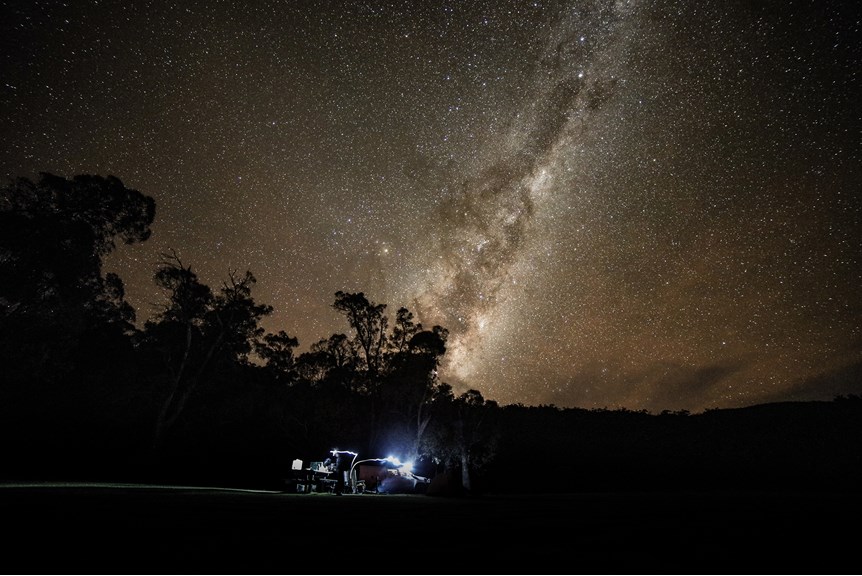Stargazing in winter
Look up at the night sky with us this Winter! Here's what you might see...
Sirius is the brightest star we can see from Earth, other than the sun of course! It’s part of a constellation called Canis Major and during winter can be seen low in the sky just after sunset in the west.
We can see 5 planets without the use of a telescope. During winter we get a great view of Jupiter and Saturn every clear night. If you time it right you may catch Mercury, Venus or Mars too.
Mars is known as the ‘red planet’ as it is covered in iron oxide (rust). You might just see a hint of red when looking at Mars in the night sky.
Mars has the largest volcano in the Solar System, called Olympus Mons. It is about three times higher than Mt Everest!
Jupiter is the largest planet in the Solar System. Nearly 1,400 Earth’s could fit inside it! Did you know that Saturn’s magnificent rings are actually spinning chunks of rock and ice? Some of these chunks are as big as houses!
How can you tell if you are looking at a star or a planet? Stars are very far away from the Earth and twinkle, just like the words in the song, Twinkle, Twinkle, Little Star! Planets don’t twinkle like stars do and look like a constant or steady bright light in the sky.
Have you ever looked up and seen that fuzzy white band across our night sky? It is called the Milky Way. The Milky Way is our Galaxy, and it contains 100- 400 billion stars; our Sun is just one of those.
How far can you see without a telescope? There are two fuzzy white patches in the sky called the Magellanic Clouds that you can only see from very dark places, away from the bright city lights. These are actually two small galaxies outside our own, over 150,000 light years away.
People across the world see different patterns or figures when looking at the stars that make up the Southern Cross. To some Maori cultures the stars look like an anchor, to some Indigenous Australians the stars look like a possum, and to some African cultures the stars look like multiple giraffes.
Join our Skynotes mailing list
Get your monthly dose of Melbourne's night sky straight to your inbox! With Skynotes you'll know where to find the brightest planets, constellations and meteor showers each month.
